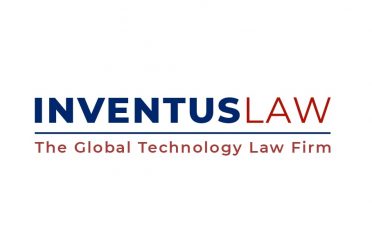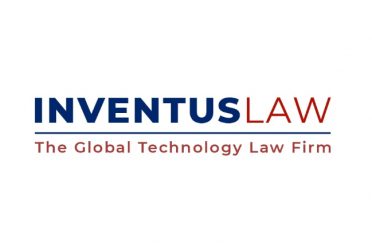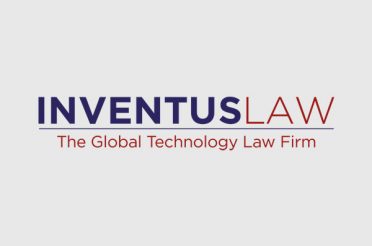FORGIVENESS OF THE PPP LOAN UNDER THE CARES ACT
May 26, 2020[1]
Now that you have received the proceeds of your Paycheck Protection Program Loan (the “PPP Loan”) from your Bank, it is important for you to think about the process for getting your PPP Loan forgiven.
The Cares Act (the “Act”) provides that the proceeds of the PPP Loan may be used for (i) salaries, wages, commissions, tips or similar compensation (“Compensation”); (ii) payments for vacation, parental, family, medical or sick leave “(collectively “Leave”); (iii) allowance for dismissal or separation (“Severance Pay”) (iv) payments required for the provision of group health care benefits, including insurance premiums (collectively “Health Care Benefits”); (v) retirement benefits (“Retirement Benefits”); and (vi) state and local taxes assessed on the compensation of employees (collectively “State Taxes” and, with Health Care Benefits, Retirement Benefits, collectively “Payroll Related Costs”); (vii) payment of utilities (“Utilities”), (viii) payment of rent (“Rent”), and (viii) the payment of interest on a mortgage (“Mortgage Interest,” and, with Rent, and Utilities, the “Other Expenses,” and with Compensation, Payroll Related Costs, Utilities, and Rent, collectively “Eligible Expenses”).[2]
The Act and the SBA guidelines allow for the forgiveness of the PPP Loan, if used for Eligible Expenses “paid” or “incurred” during the 8-week period. The new Interim Final Rule (“the IFR”), released by the SBA on May 22, 2020, confirms that for Cash Compensation and Payroll Related Costs, the 8-week period begins either on (i) the date the proceeds of the PPP Loan is received by the Borrower (the “Covered Period”) or (ii) the first day of the first payroll period in the Covered Period after the proceeds of the PPP Loan are received (the “Alternative Covered Period” and collectively, with the Covered Period, the “PPP Forgiveness Period”). The IFR suggests that the Alternative Covered Period option is limited to borrowers that have bi-weekly or more frequent payroll cycles. Importantly, payments outside of the PPP Forgiveness Period, even if for Eligible Expenses, will not be forgiven. Excess Payments, as defined below, will not be forgiven even if paid in the PPP Forgiveness Payment Period.
Cash Compensation and Payroll Related Costs are considered paid on the day that paychecks are distributed, or you originate an ACH credit transaction. Cash Compensation and Payroll Related Costs are considered incurred on the day the employee’s pay is earned. Such costs incurred during the borrower’s last pay period of the PPP Forgiveness Period are eligible for forgiveness if paid on or before the next regular payroll date.
The relevant 8-week period for Other Expenses is only the Covered Period as indicated by the SBA’s Loan Forgiveness Application (the “Loan Forgiveness Application”) released on May 15, 2020 and the IFR. Other Expenses (if in effect before February 15, 2020) that are “paid” or “incurred” during the Covered Period and paid on or before the next regular Rent/Utilities billing date, even if the billing date is after the Covered Period, are also forgivable. Importantly, as per the IFR, past rents/utilities prior to the Covered Period, if paid during the Covered Period, are eligible for forgiveness. But Other Expenses cannot exceed 25% of the total forgiveness amount (the “25% Limit”). Amounts of Other Expenses over the 25% Limit are not forgivable. You cannot use the Alternative Covered Period to calculate forgiveness for Other Expenses.
The SBA guidelines provide that, for each individual employee, the total amount of Cash Compensation eligible for forgiveness cannot exceed an annual salary of $100,000, as prorated for the Covered Period (“Excess Payments”). In other words, it cannot exceed $15,385 (($100,000/52)*8) in the Covered Period. For the purpose of forgiveness of the PPP Loan, “cash compensation” includes the sum of gross salary, gross wages, gross tips, gross commissions, Leave, not including leave covered by the Families First Coronavirus Response Act, and Severance Pay (“Cash Compensation”) paid or incurred during the Covered Period or the Alternative Covered Period. Additionally, for individual employees, all Payroll Related Costs are forgivable and not subject to the $100,000 limit up to the amount of the Loan that is forgivable. Some important points confirmed by the IFR mentioned below are noteworthy: (i) The IFR suggests that the amount of loan forgiveness requested for owner-employees can be no more than the lesser of (x) 8/52 of 2019 compensation and health and retirement benefits (i.e., approximately 15.38 percent of 2019 compensation) or (y) $15,385 per individual in total across “all” businesses;[3] (ii) if an employee’s total compensation does not exceed $100,000 on an annualized basis, the employee’s “bonuses” are eligible for loan forgiveness because they constitute a supplement to salary or wages and are thus a similar form of compensation.
Most importantly, the Forgiveness Application provides that the Forgivable Amount is the lesser of:
- the PPP Loan;
- the Payroll Costs and Payroll Related Costs incurred or paid during the PPP Forgiveness Period and Other Expenses paid or incurred during the Covered Period, less the reductions, if any, for (x) the reduction for full-time equivalent employee (“FTE”) headcount during the PPP Forgiveness Period (the “FTE Reduction”) and (y) the reduction in salaries and wages by more than 25% during the Forgiveness Period (the “Wage Reduction”); or
- the Payroll Costs and Payroll Related Costs paid or incurred during the PPP Forgiveness Period divided by 0.75 (each individually a “Forgiveness Cap” and collectively, the “Forgiveness Caps”).
EIDL Advance: Per the Loan Forgiveness Application, if you received the $10,000 (or lower) SBA Economic Injury Disaster Loan (“EIDL”) grant, the amount of the grant that you received must be deducted from the PPP Loan to calculate the forgivable amount (the “Forgivable Amount”).
The 25% Limit: If you use less than 75% of the PPP Loan proceeds for Payroll Costs and Payroll Related Costs in the PPP Forgiveness Period, the maximum Forgivable Amount will be the total Payroll Costs paid or incurred in the PPP Forgiveness Period plus the Other Expenses (collectively capped at 25% of the PPP Loan) paid or incurred in the Covered Period.
FTE Employee Reductions: If you reduced your FTE employees during the PPP Forgiveness Period, you need to reduce the Forgivable Amount based on the (average) FTE in the PPP Forgiveness Period divided by the (average) FTE before the PPP Forgiveness Period. To calculate average FTEs before the PPP Forgiveness Period, you can elect to use either (a) your average FTEs from Jan. 1 2020 to Feb. 29, 2020, or (b) your average FTEs from Feb. 15, 2019 to June 30, 2019 (“Selected Period”).
FTE employees must be calculated on a 40-hour week. You may use 0.5 for any employee who works fewer than 40 hours per week and 1.0 for any employee who works 40 or more hours per week. You need to calculate the Cash Compensation for each employee to reflect the $100,000 per employee cap and the Wage Reduction. Employees who were fired for cause, voluntarily resigned, rejected a good-faith written offer to rehire, or voluntarily received a reduction of their hours will not be counted in determining the FTE Employee Reduction.
Wage Reduction: If you reduced the salary or wages for any employee, who did not earn more than $100,000 on an annualized basis in the year 2019 or of an employee who was not employed in 2019, by more than 25% in the PPP Forgiveness Period as compared to employee’s average annual salary between Jan. 1, 2020 to March 31, 2020 (the “Reference Period”), you must reduce your Forgiveness Amount based on the percent below the 25%. As per the IFR, this reduction calculation is performed on a per employee basis, not in the aggregate.
Intersection between FTE Employee Reduction and Wage Reduction: As per the IFR, the Wage Reduction applies only to the portion of the decline in employee salary and wages that is not attributable to the FTE Employee Reduction. The idea is to prevent borrowers from getting penalized twice.
Forgiveness Concepts: The items set forth in the above three-four paragraphs are sometimes referred to below as the “Forgiveness Concepts.” The Forgiveness Concepts do not apply if the applicable reductions in the FTEs and/or the salaries occurred between Feb. 15, 2020 and April 26, 2020 as compared to those existing as of Feb. 15, 2020 and such reductions are remedied or reversed no later than June 30, 2020. For example, if your total FTE on June 30, 2020, is greater than or equal to your total FTE for the pay period that included February 15, 2020, the FTE reduction that occurred between February 15 and April 26, 2020, can be ignored.
Interest: Interest on the PPP Loan does not appear to be forgivable.
Other Considerations: You will be required to indicate on the cover of your PPP Loan Forgiveness Application whether you, together with your affiliates (but excluding certain affiliates exempted pursuant to the SBA’s affiliation rules), received PPP loans in excess of $2 million in the aggregate. The SBA has announced that it will audit all companies which received a PPP Loan of at least $2M. As part of the Loan Forgiveness Application and the audit, you will be required to certify that you need the loan proceeds to pay payroll, to keep the company operating during the pandemic, and you did not have an alternative source of financing. Additionally, any recipient with a PPP Loan below $2 million dollars will be deemed to have made the required certification in the PPP Loan application concerning the necessity of the loan request in “good faith.”
The below examples show how to reflect these Forgiveness Concepts in your calculation of the Forgiveness Amount.
- EXAMPLE ONE: Assume the PPP Loan is $200,000, the Payroll Costs during the PPP Forgiveness Period is $250,000; no one was paid over $100,000 on an annualized basis; Payroll Related Costs were $25,000 during the PPP Forgiveness Period; you paid $10,000 rent (“Rent”), $5,000 for utilities (“Utilities”) and $5,000 Interest on a mortgage (“Mortgage Costs”) during the Covered Period; you averaged 10 employees before the PPP Forgiveness Period and 10 Employees during the PPP Forgiveness Period; and you did not get an EIDL grant. The Forgivable Amount is $200,000, which is the lowest Milestone. You have used the proceeds to pay legitimate expenses during the PPP Period. You have paid more than 75% of the proceeds of the PPP Loan on Payroll Costs and Payroll Related Costs. All of the expenses were Legitimate Expenses for use of the PPP Loan.
- EXAMPLE TWO: Same as Example One, except you paid one employee $150,000 on an annualized basis and your total payroll cost was $200,000. You may only use a $100,000 of his salary in the calculation. Therefore, the adjusted Payroll Costs is $150,000. Forgivable Amount is still $195,000 ($150,000 plus $25,000 plus $20,000).
- EXAMPLE THREE: Same as Example One, except you got the $10,000 grant under the SBA EIDL loan. The Forgivable Amount is $190,000. The SBA will deduct the $10,000 EIDL grant to calculate the Forgivable Amount when you submit the Loan Forgiveness Application.
- EXAMPLE FOUR: Same as Example One except you average 10 FTE before the PPP Forgiveness Period and 9 during the PPP Forgiveness Period. The total eligible expenses available for forgiveness is reduced proportionally by the percentage reduction in FTE employees. In this example, the percentage of FTE employees declined by 10 percent and thus only 90 percent of otherwise eligible expenses are available for forgiveness. The Forgivable Amount is $180,000.
- EXAMPLE FIVE: Same as Example One except your Payroll Cost in the PPP Forgiveness Period was $100,000 and the Payroll Related Costs are $40,000, which together is less than 75% of the PPP Loan amount. The Forgivable Amount is $160,000 ($100,000 plus $40,000 plus $20,000) because your Payroll Costs plus your Payroll Related Costs are less than 75% of the PPP Loan amount. Add the $100,000 for Payroll Cost plus the $40,000 for Payroll Related Costs plus $10,000 for Rent, $5,000 for Utilities, and $5,000 for Interest.
- EXAMPLE SIX: Same as Example Five except you spent $20,000 for Rent, $20,000 for Mortgage Interest, and $15,000 for Utilities, which is more than 25% of the PPP Loan amount. The Forgivable Amount is $190,000 ($100,000 plus $40,000 plus $50,000 which is 25% of the $200,000 PPP Loan amount).
- EXAMPLE SEVEN: Same as Example One except you reduced an FTE employee’s[4] weekly salary from $1,000 per week during the Reference Period to $700 per week during the Covered Period. The salary reduction here is 30%. The first $250 (25% of $1,000) is permissible and exempted from the reduction. The Forgivable Amount will be reduced by the 5% excess reduction of $50 per week and a total of $400 for 8-weeks. You, as a borrower, seeking forgiveness would list $400 as the salary/hourly wage reduction for that employee. Note that as per the IFR, this reduction calculation is performed on a per employee basis, not in the aggregate.
- EXAMPLE EIGHT: Same as Example One except your Payroll Cost is $100,000 and your Payroll Related Costs is $20,000 in the PPP Forgiveness Period. The Forgivable Amount is $140,000 ($100,000 plus $20,000 plus $10,000 for Rent, $5000 for Utilities, and $5,000 for Mortgage Interest.
- EXAMPLE NINE: Same as Example One except you paid employee Federal Taxes of $20,000 and State Taxes of $10,000 during the PPP Forgiveness Period and you had no Rent, Utilities, or Mortgage Costs. The Forgivable Amount would be $180,000 ($200,000 minus $20,000 because the PPP Loan proceeds cannot be used to pay employee federal taxes, but it can be used to pay state and local taxes).
- EXAMPLE TEN: Same as Example One except your first payroll period began one week before you received the PPP Loan, you made the payroll during the Covered Period and you pay payroll every two weeks. If you use the Covered Period, you would only get three payrolls as part of the forgiveness. If you use the Alternative Covered Period, you would get four payrolls as part of the forgiveness. If the payroll period began before the loan disbursement date, then you should elect the Alternative Covered Period.
- EXAMPLE ELEVEN: Same as Example One, but you paid each of your employees a bonus of $5,000. You would have to add the $5,000 to each of their salaries to determine if any of them exceeded the $100,000 cap.
- EXAMPLE TWELVE: Same as Example One, but you paid one of your employees a Leave of $10,000. You would have to add the $10,000 to his/her salary paid in the PPP Forgiveness Period to determine if his/her cash compensation exceeded the $100,000 cap on an annualized basis and, if it did, you would have to adjust the amount in the forgiveness request to reflect the $100,000 cap.
- EXAMPLE THIRTEEN: Same as Example One, but you terminated one of your employees and paid him/her a Severance of $20,000 during the PPP Forgiveness Period. You would have to add this $20,000 to the salary you paid him/her in the PPP Forgiveness Period to determine if his/her cash compensation exceeded the $100,000 on an annualized basis, and, if it did, you would have to adjust the amount in the forgiveness request to reflect the $100,000 cap.
- EXAMPLE FOURTEEN: Same as Example One, but you reduced your FTE from 10 to 9 in the PPP Forgiveness Period, you reduced salary of an FTE employee[5] by 50%. The Forgiveness Amount is $130,000, which is the lesser of (i) the PPP Loan ($200,000), (ii) the PPP Loan times the FTE Reduction Quotient (9/10) = $180,000, minus the Wage Reduction (($200,000 times .25 = $50,000)) = $130,000 or (iii) the Payroll Cost plus the Payroll Related Costs divided by 0.75 (($250,000 plus $25,000) divided by 0.75) = $366,666.67).
- EXAMPLE FIFTEEN: Same as Example 1 except an hourly wage employee had been working 40 hours per week during your Selected Period (FTE employee of 1.0) and you reduced the employee’s hours to 20 hours per week during the Covered Period (FTE employee of 0.5). There was no change to the employee’s hourly wage during the Covered Period. Because the hourly wage did not change, the reduction in the employee’s total wages is entirely attributable to the FTE employee reduction and the borrower is not required to conduct a salary/wage reduction calculation for that employee. This example explains the intersection between FTE Employee Reduction and Wage Reduction.[6]
- EXAMPLE SIXTEEN: Same as Example 1 except your Covered Period begins on June 1 and ends on July 26. The borrower pays its May and June electricity bill during the Covered Period and pays its July electricity bill on August 10, which is the next regular billing date. You may seek loan forgiveness for its May and June electricity bills, because they were paid during the Covered Period. In addition, you may seek loan forgiveness for the portion of its July electricity bill through July 26 (the end of the Covered Period), because it was incurred during the Covered Period and paid on the next regular billing date.[7]
This memo is not intended to constitute legal advice. If you have any questions about the PPP Loan Forgiveness Program, you should contact your personal attorney or Christopher L. Rasmussen, Managing Partner, Inventus Law, PC., at 1.408.482.3216 or chris@inventuslaw.com. Shantanu Surpure, Partner, Inventus Law, PC., at 1.650.427.0320 or shantanu@inventuslaw.com, or Aakshita Bansal, Intern, Inventus Law, PC., at 1.757.912.7437 or aakshita@inventuslaw.com.
Disclaimer: This Memo is being provided for information purposes only and is drafted entirely on the bases of public resources. Information contained on or made available herein is not intended to and does not constitute legal advice, recommendations, mediation or counseling under any circumstance. This information and your use thereof do not create an attorney-client relationship. You should not act or rely on any information provided herein without seeking the advice of a competent attorney licensed to practice in your jurisdiction for your particular business. The rules and regulations are still being interpreted and may affect the requirements and qualifications for the loan forgiveness described herein under the Paycheck Protection Program.
[1] For your information, it appears that Congress is going to revise the Loan Forgiveness Program in the next week or two whereby they are going to extend the 8-week Forgiveness Period to at least 16 weeks and revise the 25% rule to allow a larger a percentage of the PPP Loan to be used to pay Non-Payroll Related Expenses.
[2] The Act explicitly excludes from the definition of Payroll Costs (Compensation), any cash compensation of (i) over $100,000 in salary or bonuses to each employee on an annualized basis, (ii) federal taxes, assessed on the compensation of employees, (iii) compensation for any employee, not a resident of the United States, (iv) credit for qualified sick leave allowed under the Families First Coronavirus Response Act , and (v) credit for qualified family leave allowed under the Families First Coronavirus Response Act.
[3] It is not clear how an “owner-employee” is to be defined or how it is to be applied. We hope that SBA will clarify this in the next week or so. We know that it applies to sole proprietorships (self-employed and independent contractors), partnerships and single member LLCs.
[4] Employees referred to in this Example are employees who did not receive, during any single pay period during 2019, wages or salary at an annualized rate of pay in an amount more than $100,000.
[5] Employees referred to in this Example are employees who did not receive, during any single pay period during 2019, wages or salary at an annualized rate of pay in an amount more than $100,000.
[6] https://www.sba.gov/sites/default/files/2020-05/IFR%20Forgivenss%20FINAL.pdf, page 20.
[7] https://www.sba.gov/sites/default/files/2020-05/IFR%20Forgivenss%20FINAL.pdf, page 12.






